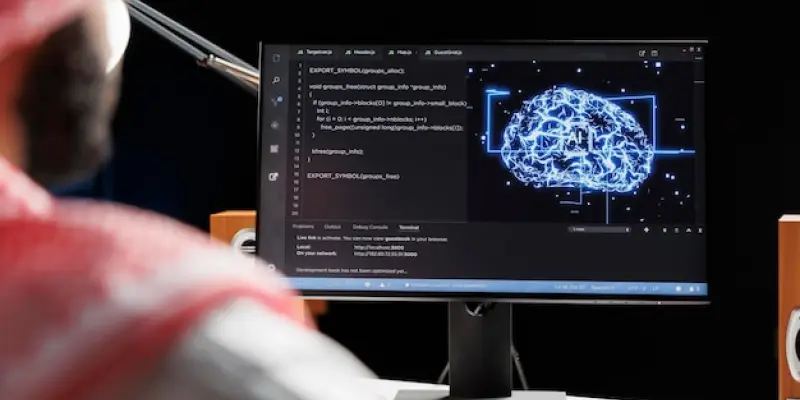The tech industry in the United States is facing an intriguing paradox as of January 2025, with a notable rise in unemployment among tech workers, despite a simultaneous increase in job openings within the sector. This data, sourced from the US Bureau of Labor Statistics (BLS) and supplemented by insights from IT industry association CompTIA, presents a complex scenario where the sector is burgeoning with job opportunities, even as more tech professionals find themselves without employment. The scenario underscores evolving industry demands and shifts in job requirements, foreshadowing nuanced transformations in the tech labor market.
Tech Unemployment Trends
Data from January shows a near one percentage point increase in tech unemployment, rising from 2.0% in December 2024 to 2.9% in January 2025, despite the sector adding 6,787 positions. Even though tech unemployment rose, it was still significantly below the national average, which saw a decrease from 4.1% to 4.0%. This disparity between higher unemployment and increasing job listings underscores the core contradiction reported this month. This intriguing trend suggests intricacies in the labor market where tech talent may not be aligning with the immediate needs or changing requirements of employers.
Despite the rise in tech unemployment, the sector saw new employer job listings increase by 51,756, reaching over 220,000 postings in January. The total number of active tech job postings climbed to 476,000, including an 8.4% share related specifically to artificial intelligence (AI). Particularly noteworthy was the upsurge in AI-related job postings, which stood at about 40,000, up by 1,500 from December. This growth in AI job postings indicates a robust demand for specialized skills in emerging technologies even as the broader tech workforce grapples with joblessness.
Shift in Job Requirements
A significant trend identified in the report is the decreasing emphasis on four-year college degrees for many tech roles. Approximately 45% of job listings did not require such qualifications. Specifically, the need for a degree was lower among network support specialists (17%), tech support specialists (29%), and computer programmers (43%). This reflects a broader industry shift towards skills and competencies acquired through non-traditional educational pathways, potentially opening doors for a more diverse pool of candidates.
Tim Herbert, CompTIA’s chief research officer, notes that there is an increasing focus on balancing fundamental tech skills with expertise in next-generation domains such as AI. This blend of skills partially explains the mixed signals in unemployment and job postings. It is also suggested that some tech workers may have delayed their job search in December due to the holiday season, becoming more actively engaged in January. This postponement could have skewed the unemployment statistics temporarily, contributing to the rise in joblessness despite the steady demand for tech professionals.
Robust Hiring in Specific Subdomains
Further analysis reveals vigorous hiring activity in certain tech subdomains, particularly in IT services and software development, which saw an addition of 13,700 jobs. This growth offset a reduction of 7,900 jobs in telecommunications. Overall, the broader tech economy experienced a net increase of 228,000 jobs, indicating strong demand for tech talent despite general market sluggishness. This growth trend highlights the dynamic nature of tech employment, where certain subfields display significant expansion even as others contract.
Kye Mitchell, head of tech recruitment at Experis North America, emphasizes the AI-driven shift in demand. The generative AI (genAI) sector is transitioning from initial curiosity to practical application, necessitating more executive and project management roles to implement AI initiatives effectively. Executive management positions saw an increment of 16%, while project manager roles surged dramatically by 587% compared to the previous year. This shift implies that while technical roles remain essential, there is a growing need for leadership and management skills to guide AI projects from conceptual stages to successful implementations.
Evolving Career Landscape
Analyzing the data reveals a dual narrative: while rising tech unemployment indicates challenges for job seekers, the sector is simultaneously focused on aggressive hiring, especially in areas like AI. This disparity highlights a transformation in the tech career landscape, where success now requires a blend of technical acumen and strategic insight. Traditional career trajectories, characterized by a straightforward progression from junior developer to senior roles, are being replaced by a more interconnected “career web,” incorporating a broader range of skills and experiences.
Professionals in contemporary tech roles must now navigate cross-domain knowledge, combining specialized technical expertise with a broader understanding of business and strategic considerations. For instance, modern cloud engineers must juggle decisions around data governance, sustainability, and operational costs, while AI developers must concentrate on not only constructing models but also ensuring their practical application and ethical deployment. This evolving landscape demands that tech professionals be versatile and adapt to emerging challenges and opportunities.
Focus Areas for Tech Professionals
As of January 2025, the tech industry in the United States is experiencing a curious contradiction. Despite a significant increase in job openings within the sector, there is also a notable rise in unemployment among tech workers. This information, provided by the US Bureau of Labor Statistics (BLS) and further analyzed by IT industry association CompTIA, reveals a complex situation. On one hand, the industry is booming with job opportunities; on the other, a growing number of tech professionals are finding themselves jobless. This scenario highlights evolving demands and shifts in required skills within the industry, suggesting that the tech labor market is undergoing significant, nuanced transformations. Changes in technology, and possibly the adoption of new systems and practices, are creating a gap between what employers need and what the current workforce can offer. Consequently, this paradox of rising job openings alongside increasing unemployment rates could signal a period of adjustment and re-skilling for many tech professionals.

